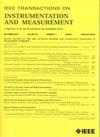Diffusion Probabilistic Learning With Gate-Fusion Transformer and Edge-Frequency Attention for Retinal Vessel Segmentation
IF 5.6
2区 工程技术
Q1 ENGINEERING, ELECTRICAL & ELECTRONIC
IEEE Transactions on Instrumentation and Measurement
Pub Date : 2024-06-28
DOI:10.1109/TIM.2024.3420264
引用次数: 0
Abstract
Retinal vessel topology provides unique biological information for the diagnosis of fundus diseases. However, most existing deep learning-based vessel segmentation methods mainly focus on global fundus structure, which may suffer from generalization errors and blurring caused by lesions and image noise. Besides, vessel edge details and feature channel information are generally ignored or not considered simultaneously, and this insufficiency commonly leads to suboptimal segmentation performance. To tackle these issues, we propose a novel diffusion probabilistic learning with gate-fusion transformer and edge-frequency attention (DPL-GFT-EFA) for retinal vessel segmentation. Specifically, the DPL leverages the image denoising as a proxy task to pretrain the segmentation model, which enhances the anti-interference ability by learning noise-related information. Then, the gate-fusion transformer (GFT) block fuses high-level representations from condition and diffusion encoders (DEs) with a gate mechanism, highlighting the mutual features between fundus patterns and noisy images. Finally, the edge-frequency attention (EFA) block is introduced to further consolidate the vessel edge details and discriminative channel features. We conduct the experiments on five public retinal image datasets, and achieve the accuracies of 97.05%, 97.70%, 97.71%, 97.16%, and 97.26% on DRIVE, STARE, CHASE_DB1, HRF, and IOSTAR datasets, respectively. These results demonstrate that the proposed method outperforms state-of-the-art models and achieve promising segmentation performance even in complex images containing fundus lesions and noise. Our source code is available at利用门-融合变换器和边缘-频率注意进行视网膜血管分割的扩散概率学习
视网膜血管拓扑为眼底疾病诊断提供了独特的生物学信息。然而,现有的大多数基于深度学习的血管分割方法主要关注全局眼底结构,可能存在泛化误差以及病变和图像噪声造成的模糊。此外,血管边缘细节和特征通道信息通常会被忽略或未被同时考虑,这种不足通常会导致分割效果不理想。为了解决这些问题,我们提出了一种新颖的扩散概率学习与门控融合变换器和边缘频率注意(DPL-GFT-EFA),用于视网膜血管分割。具体来说,DPL 利用图像去噪作为预训练分割模型的代理任务,通过学习噪声相关信息来增强抗干扰能力。然后,门-融合转换器(GFT)模块通过门机制融合来自条件编码器和扩散编码器(DE)的高级表示,突出眼底模式和噪声图像之间的相互特征。最后,引入边缘频率注意(EFA)模块,进一步巩固血管边缘细节和辨别通道特征。我们在五个公开视网膜图像数据集上进行了实验,在 DRIVE、STARE、CHASE_DB1、HRF 和 IOSTAR 数据集上的准确率分别达到了 97.05%、97.70%、97.71%、97.16% 和 97.26%。这些结果表明,即使是在包含眼底病变和噪声的复杂图像中,所提出的方法也优于最先进的模型,并取得了可喜的分割性能。我们的源代码见 https://github.com/YangLibuaa/DPL-GTF-EFA。
本文章由计算机程序翻译,如有差异,请以英文原文为准。
求助全文
约1分钟内获得全文
求助全文
来源期刊

IEEE Transactions on Instrumentation and Measurement
工程技术-工程:电子与电气
CiteScore
9.00
自引率
23.20%
发文量
1294
审稿时长
3.9 months
期刊介绍:
Papers are sought that address innovative solutions to the development and use of electrical and electronic instruments and equipment to measure, monitor and/or record physical phenomena for the purpose of advancing measurement science, methods, functionality and applications. The scope of these papers may encompass: (1) theory, methodology, and practice of measurement; (2) design, development and evaluation of instrumentation and measurement systems and components used in generating, acquiring, conditioning and processing signals; (3) analysis, representation, display, and preservation of the information obtained from a set of measurements; and (4) scientific and technical support to establishment and maintenance of technical standards in the field of Instrumentation and Measurement.
 求助内容:
求助内容: 应助结果提醒方式:
应助结果提醒方式:


